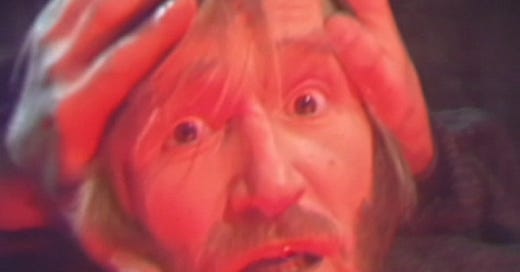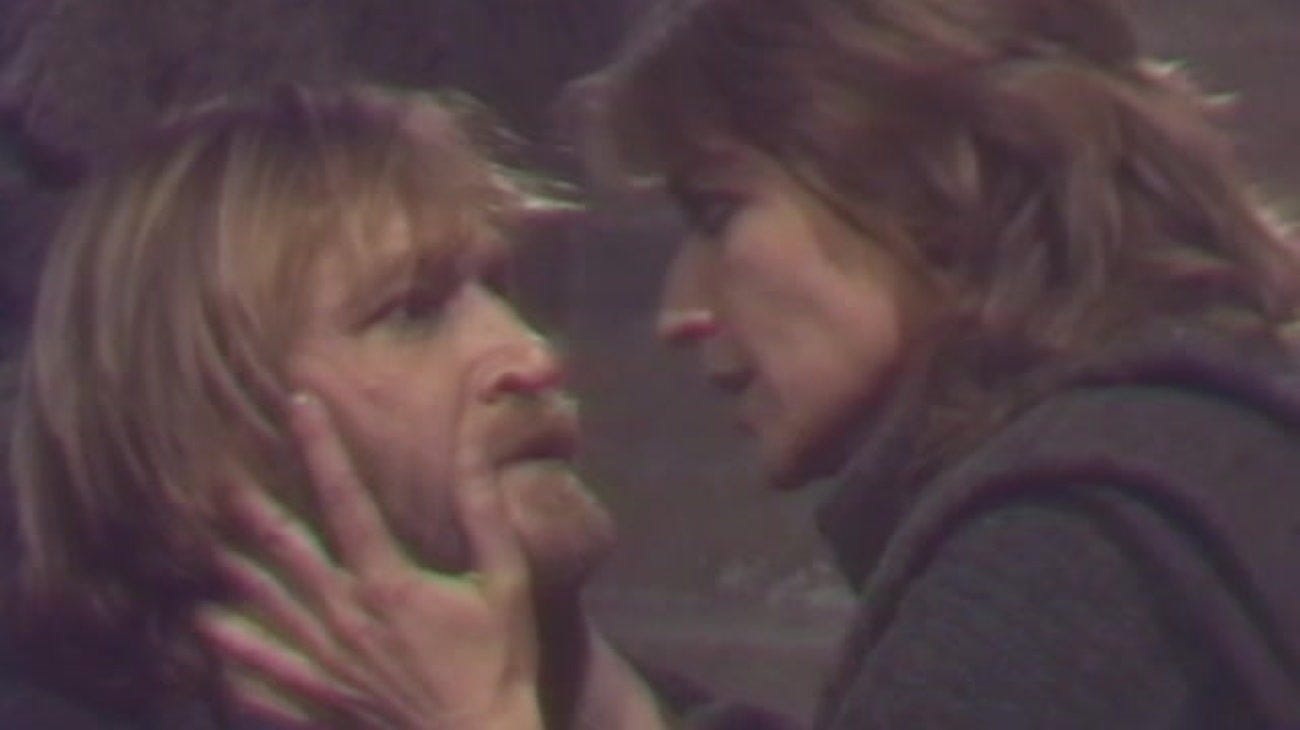Béla Tarr, Hungary’s greatest and most enigmatic cinematic existentialist, has seen a resurgence of popularity in recent years. For decades, his movies were largely inaccessible, viewable only through out-of-print DVDs or rare screenings at places like MoMA or the Anthology Film Archives. Today, many of his films (including Sátántangó, his seven-and-a-half-hour magnum opus) have fortunately been restored in 2K and 4K resolutions and are readily available for cinephiles’ viewing pleasure.
The current Tarr’s renaissance should hopefully spotlight the significance of MacBeth within the famed Hungarian auteur’s filmography. This 1982 adaptation of Shakespeare’s infamous Scottish play, originally produced for television, is perhaps Tarr’s least-seen picture, yet it marks a major stylistic turning-point for the filmmaker, a shift away from cinema verité-esque dramas like Family Nest and The Outsiders to cosmic formalist slow cinema epics like Damnation, Werckmeister Harmonies and The Turin Horse. Though not quite as existentialistic as Sátántangó, MacBeth demonstrated that Tarr’s interest stretched beyond the realm of social realism.
As one of the world’s most renowned texts, MacBeth has always been a fruitful source material for cinema’s greatest minds, having previously been adapted by Orson Welles, Akira Kurosawa, and Roman Polanski. Although Tarr clearly admires Shakespeare, even directing a partial adaptation of MacBeth as a film student, MacBeth is a thematic outlier within his career, being his sole film that doesn’t focus on the proletariat and one of his two movies not set within Hungary. While Tarr’s sensibilities are closer to avant-garde artists like Miklós Janscó and László Krasznahorkai than a dramatist like Shakespeare, MacBeth provides the filmmaker the aesthetic and narrative blueprint for the second half of his career.
MacBeth’s most apparent connection to Tarr’s more recent movies is its use of tracking shots. The film, composed of two takes (the second of which runs about 57 minutes long and constitutes most of the picture’s running time), reflects Tarr’s increasing interest in the expansion of space. Tarr’s camera dances around the confines of MacBeth’s castle (recorded in a cellar in Budapest), following the Scottish king and his devious wife from their triumphant rise to power to their demise. While Family Nest and The Outsiders featured mostly static cinematography, MacBeth’s camera is in perpetual motion, gliding across the moldy hallways and torch-lit corridors that encompass the world. The restless cinematography, combined with the aesthetic uniformity of the set design, makes it difficult to comprehend the layout of the castle, which is as seemingly endless as Daedalus’ nightmarish labyrinth. Like water-logged puszta in Sátántangó or the mining ropeway from Damnation, MacBeth’s deteriorating environment coveys a world seemingly on the brink of Armageddon, destroying all of its inhabitants from within.
What differentiates MacBeth’s cinematography from that of Sátántangó or The Turin Horse is its heavy dosage of close-ups. Juxtaposed to Krasznahorkai, Tarr’s screenwriting partner from Damnation onward renowned for descriptive run-on sentences of his literary backdrops, Shakespeare is reliant on soliloquys for exposition, forcing Tarr to constantly spotlight the monologists within the frame. As such, MacBeth is by far Tarr’s most dialogue-driven movie, where the characters dominate the environment rather than vice versa. MacBeth’s dependence on foregrounding its ensemble minimizes the atmospheric dread of the mise-en-scène. Combined with the compressed hour-long runtime, Tarr is forced to compress or eschew many of the text’s most elaborate and evocative set pieces like the moving of Birnam Woods or the climatic final battle. Like Rope, Alfred Hitchcock’s one-shot movie adaptation of Patrick Hamilton’s play, MacBeth opts for technical virtuosity over storytelling, never giving audiences a chance to breathe. This excess of close-ups and speech curtails the gothic aura and horror of Shakespeare’s narrative, resulting in a picture that feels little more than a formalistic exercise.
Yet while Tarr’s MacBeth is more of an experiment than a true adaptation of Shakespeare’s work, the film demonstrated that the Hungarian filmmaker had a singular vision beyond social realism. Without MacBeth, Tarr would have never discovered his directorial voice as an existentialistic poet of alienation. This made-for-TV endeavor allowed the Hungarian auteur to expand upon his directorial ambitions, setting up the stage for Damnation and Sátántangó.






